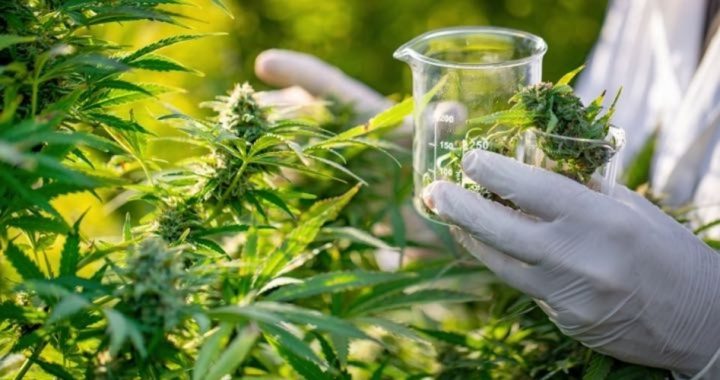
Conservatives have long warned that academia has gone to pot. Now it’s literally true with colleges across the nation actually offering courses in cannabis studies. As CBS Philly reports:
Colleges are now adding cannabis to their curriculum. Grace DeNoya is used to getting snickers when people learn she’s majoring in marijuana.
“My friends make good-natured jokes about getting a degree in weed,” said DeNoya, one of the first students in a new four-year degree program in medicinal plant chemistry at Northern Michigan University. “I say, ‘No, it’s a serious degree, a chemistry degree first and foremost. It’s hard work. Organic chemistry is a bear.’”
As a green gold rush in legal marijuana and its non-drug cousin hemp spreads across North America, a growing number of colleges are adding cannabis to the curriculum to prepare graduates for careers cultivating, researching, analyzing and marketing the herb.
Research shows there are high times ahead for all kinds of careers in cannabis, ranging from greenhouse and dispensary operators to edible product developers, marketing specialists, quality assurance lab directors and pharmaceutical researchers. Arcview Market Research, which focuses on cannabis industry trends, projects the industry will support 467,000 jobs by 2022.
Presenting one of its many examples of academia giving new meaning to the term “higher education,” CBS also writes, “‘We’re providing a fast track to get into the industry,’ said Brandon Canfield, a chemistry professor at Northern Michigan University in Marquette. Two years ago, he proposed a new major in medicinal plant chemistry after attending a conference where cannabis industry representatives spoke of an urgent need for analytical chemists for product quality assessment and assurance.”
The site continues, “The four-year degree, which is the closest thing to a marijuana major at an accredited U.S. university, has drawn nearly 300 students from 48 states, Canfield said.”
Of course, all this is catalyzed by not just pot’s increasing legality, but also by how it has become a favored vice. Just consider: While tobacco companies have become villains worthy of being sued into oblivion, and while smoking cigarettes is thought a “dirty habit,” toking now has quite the cachet.
But does this double standard have any basis in reality? Science appears to say no. As the Daily Mail related in 2014, reporting the findings of a 20-year study:
• One in six teenagers who regularly smoke the drug become dependent on it
• Cannabis doubles the risk of developing psychotic disorders, including schizophrenia
• Cannabis users do worse at school. Heavy use in adolescence appears to impair intellectual development [i.e., it lowers I.Q.]
• One in 10 adults who regularly smoke the drug become dependent on it and those who use it are more likely to go on to use harder drugs
• Driving after smoking cannabis doubles the risk of a car crash, a risk which increases substantially if the driver has also had a drink
• Smoking it while pregnant reduces the baby’s birth weight
• Heavy users experience withdrawal symptoms
• Rates of recovery from cannabis dependence among those seeking treatment are similar to those for alcohol
Other experts have also sounded the alarm. One is Dr. Michael Savage, who aside from being a well-renowned talk-show host is a trained epidemiologist and has authored more than a dozen books on health and nutrition. As I wrote in 2014:
During a 2010 radio segment — at the end of which he named approximately two dozen chemicals found in cannabis smoke — he said, “Marijuana is far more dangerous than tobacco….” Savage, who nonetheless believes in the drug’s decriminalization, continued, “Mainstream marijuana has ammonia levels that are up to 20 fold greater than that found in tobacco. Hydrogen cyanide, nitrogen oxide, and some aromatic amines, which are all carcinogenic, were found in marijuana smoke at concentrations three to five times those found in tobacco smoke.”
Savage also mentioned that there’s mercury in much of cannabis today because it may be grown in mercury-rich volcanic soil. He then alluded to mad-hatter syndrome, thus named because hatters many years ago would often develop mercury-induced dementia due to exposure to the metal, which they used to stiffen the fibers of their felt hats. This phenomenon led to the descriptive “Mad as a hatter.”
So in a way, the legalization debate can be a distraction; what’s ignored is that having a right to do something and being right in doing it are very different things. Cigarettes are legal, yet no one argues that they’re anything but coffin nails. Why the different attitude — which often borders on self-righteous — with marijuana?
Pot advocates also like to analogize marijuana to alcohol, yet it’s a flawed analogy. It’s widely accepted that casual, responsible alcohol use means one or two drinks. Yet cannabis users never take just one or two puffs.
The goal is to get “drunk” (high) every time they light up.
So while excessive use is far more physically devastating with alcohol than with marijuana (I’ve seen it), tolerating marijuana use is tantamount to abiding drunkenness. A mind-altering substance is just that — mind-altering. Your mind is precious, though. Why jeopardize it?
To cement the point, here’s one last bit of food for thought: Imagine you have two sons in college and learn that one has developed a pack-a-day cigarette habit and the other is using pot daily. You might be worried about the health of both, but for which one’s future would you most fear?
Photo: CasarsaGuru / E+



